STL218: Megan Fitzpatrick’s favorite tool storage
Megan Fitzpatrick joins Barry and Ben to discuss Moxon vises, wooden vs. metal-bodied handplanes, tri-squares vs. combo squares, grinders, and why it's worth building a tool chest.This episode is sponsored by Lee Valley and Titebond.
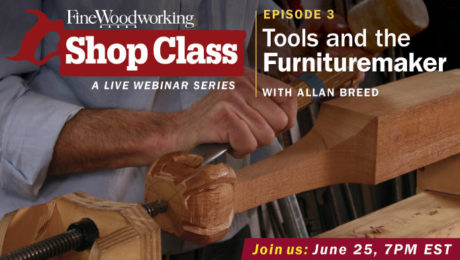 |
Question 1:
From Brendan:
I’m a beginner apartment woodworker in San Francisco who volunteers at City College of SF’s woodshop as an assistant. At home, my kitchen counter peninsula is my bench, so building a Moxon vise is making more and more sense. I tried to reverse-engineer the practicalities from all the commercial kits and plans for twin-screw / Moxon and there’s one persistent dimension: 24″ between the screws — though each mentions 16-in. is more practical for all but casework.
Looking at all the casework around me (dressers, kitchen cabinets, drawer boxes, bathroom vanities, console tables) nothing is actually deeper than 20″, and most are 3-8″ drawers or 12-18″ carcasses. So why is 24″ the norm? Are deep armoirs and waterfall desks that outer limit? Or is there another practical workholding use for Moxons at 24″ that escapes me? Is the answer as simple as you don’t want your workpiece too close to the screws? Or is “go big or go home” prevailing only so you won’t need two Moxons?
 |
|
 |
|
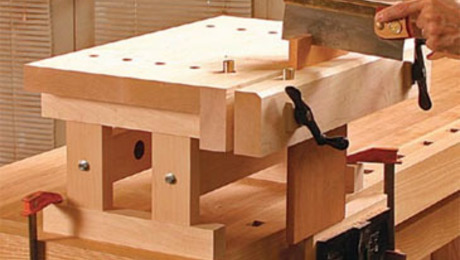 |
Question 2:
From Will:
A few weeks ago my buddy and I got to discussing the different merits of high end marking tools, specifically a Starrett 6″ combo square vs a set of try squares from Woodpecker. He asked what I felt I was getting with the Starrett vs the Woodpecker for approximately the same price. While I know why I like the added versatility of the combo square and it tends to fit better with my wood working style, I came to the conclusion that I also would not mind having the Woodpecker squares.
That said, what do you think is a better investment as a first high end square? Or would you look at something completely different? Something like the veritas Sliding Square or the Bridge City Toolworks tri squares (which look dope AF).
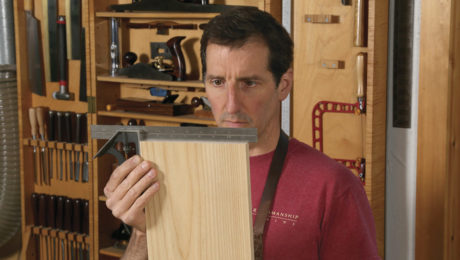 |
|
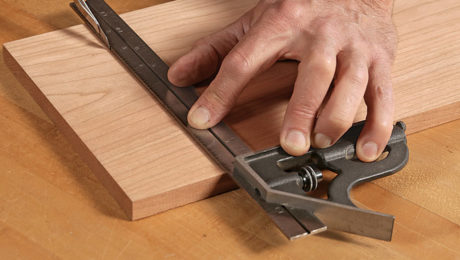 |
|
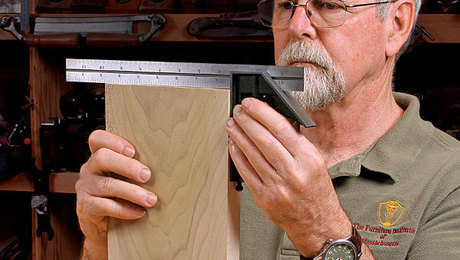 |
Segment: All-Time Favorite Tool Storage of All Time… for this week.
Ben – Matt Kenney’s traveling tool chest
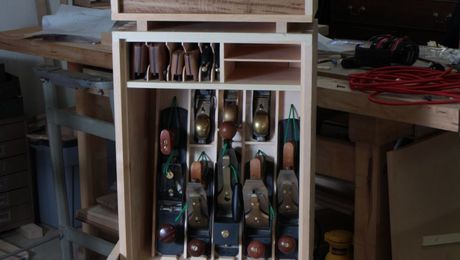 |
Megan – Her Dutch tool chest
 |
Let’s Go DutchMegan’s Dutch tool chest on the Lost Art Press blog. |
Barry – His workbench – wah wah
Question 3:
From Aaron:
Is there a real benefit to a wooden-bodied plane versus a cast-iron? I know there are very pricey versions of both, and I’m wondering why someone would forego a slick Veritas or Lie Nielsen for a unique, wooden-bodied beauty. Also what are the pros of building your own wooden-bodied plane.
Question 4:
From Robert:
When the secondary bevel on my plane irons become too wide, I normally use sandpaper on a granite block to restore the primary bevel; which can be very slow. I have used grinding wheels to do this in the past , but I have upgraded to premium blades and don’t want to deal with the inconsistencies that grinding can cause. I was thinking that an extra-extra coarse diamond plate (120 grit) may work just as well and be quicker than sandpaper. What do you think?
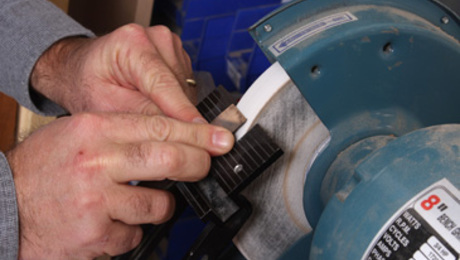 |
|
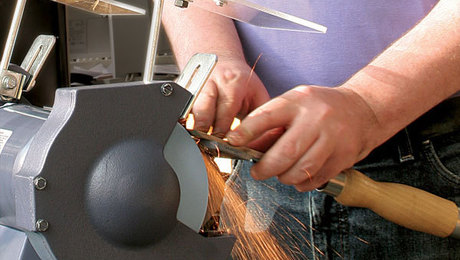 |
Grind Perfect Edges Without BurningIn just seconds, get a tool ready for honing |
Every two weeks, a team of Fine Woodworking staffers answers questions from readers on Shop Talk Live, Fine Woodworking‘s biweekly podcast. Send your woodworking questions to [email protected] for consideration in the regular broadcast! Our continued existence relies upon listener support. So if you enjoy the show, be sure to leave us a five-star rating and maybe even a nice comment on our iTunes page.






















Comments
Thank you. You nailed it today.
About question 4. I shared Robert's dilemma but I now have a solution. I once bought a Worksharp and it has sat around doing nothing since I decided that it wasn't quite up to producing the edge I want. I glued a 6" 80 grit sanding disc on it and now use it to produce the primary bevel before I go over to stones. Perhaps not quite as quick as a grinder but it is consistent and has the added benefit of preventing me from doing serious damage to an expensive blade.
I did the same thing for awhile and had forgotten about it! The worksharp does work will as a grinder. It lives in my brother's shop now.
I can’t afford a fancy wet-grinder so I bought an old German hand crank. I’m still learning admittedly, but it’s all I’ve got and I’m pleased with my ‘journey’ to learn ‘sharp’. I’ve also got cheap Chinese supermarket stones and am managing ok.
One day if I am loaded I might upgrade.
Log in or create an account to post a comment.
Sign up Log in